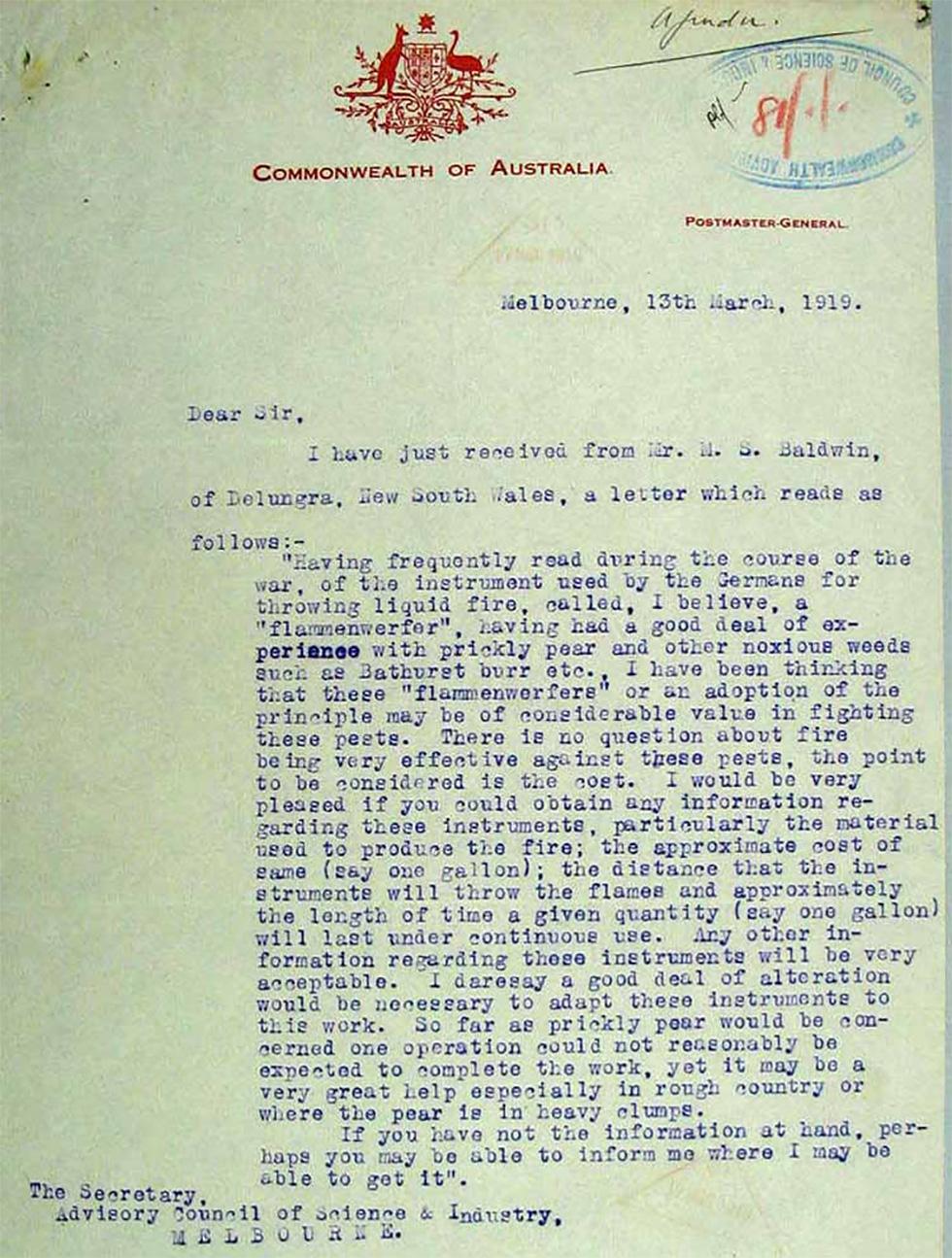
Letter to the Advisory Council of Science and Industry
Aboriginal and Torres Strait Islander people should be aware that the National Archives' website and collection contain the names, images and voices of people who have died.
Some records include terms and views that are not appropriate today. They reflect the period in which they were created and are not the views of the National Archives.


Letter to the Advisory Council of Science and Industry
[Letterhead in red ink displaying the Australian coat of arms with the text ‘COMMONWEALTH OF AUSTRALIA’, ‘POSTMASTER-GENERAL’.]
[Handwritten at top of page in black ink and underlined:] Agenda.
[Stamped in blue ink: ‘COMMONWEALTH ADVISORY COUNCIL OF SCIENCE & INDUSTRY’, with illegible handwritten initials in black ink and reference number ‘81/-/-‘ handwritten in red ink inside the stamp.]
Melbourne, 13th March, 1919.
Dear Sir,
I have just received from Mr. M. S. Baldwin, of Delungra, New South Wales, a letter which reads as follows:-
“Having frequently read during the course of the war, of the instrument used by the Germans for throwing liquid fire, called, I believe, a “flammenwerfer”, having had a good deal of experience with prickly pear and other noxious weeds such as Bathurst burr etc., I have been thinking that these “flammenwerfers” or an adoption of the principle may be of considerable value in fighting these pests. There is no question about fire being very effective against these pests, the point to be considered is the cost. I would be very pleased if you could obtain any information regarding these instruments, particularly the material used to produce the fire; the approximate cost of same (say one gallon); the distance that the instruments will throw the flames and approximately the length of time a given quantity (say one gallon) will last under continuous use. Any other information regarding these instruments will be very acceptable. I daresay a good deal of alteration would be necessary to adapt these instruments to this work. So far as prickly pear would be concerned one operation could not reasonably be expected to complete the work, yet it may be a very great help especially in rough country or where the pear is in heavy clumps.
If you have not the information at hand, perhaps you may be able to inform me where I may be able to get it”.
[Addressed to:] The Secretary.
Advisory Council of Science & Industry,
MELBOURNE
Learn how to interpret primary sources, use our collection and more.
